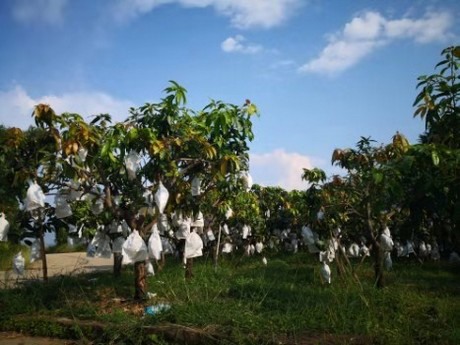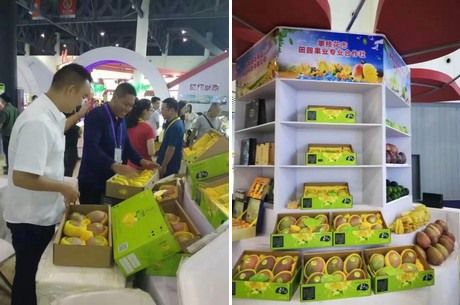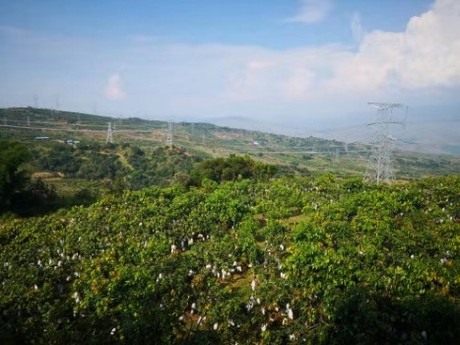This year's mango marketing season is coming to an end after nearly four months of hot sales. Production areas in Sichuan are seeing increased production this season, and prices are about 20% higher than in previous years. Yang, Manager of Panzhihua City Tianyuan Fruits Cooperative talked about this season's mango market and the competitiveness of mangoes grown in China.

“The mango season in Panzhihua, Sichuan started at the beginning of June and ended in mid-October. The weather in Sichuan has been good this year, so fruiting has been abundant and the production is about 20% higher than in previous years. The fruit is of high quality, with thick flesh and glossy skin. The overall market for locally grown mangoes this year has been smooth, and their current market price is at 7 yuan/half a kilo, nearly 2 yuan higher than the same period of last year,” Yang said.
Keitt is the main variety offered by Panzhihua City Tianyuan Fruits Cooperative, whose sales this year are around 15,000 tons. “Our products are mainly sold locally. Our sales channels include large supermarkets, fruit store chains, and e-commerce platforms. Our sales network covers all first-tier cities in China. Over recent years, the sales volume and speed of mangoes from Sichuan have been improving year by year. This is thanks to our increased publicity efforts and promotion activities on top of ensured quality,” Yang said.
“We will pay more attention to the preference of consumers in the taste of fruit in formulating sales plans. For example, we found that consumers from northern China prefer tarter fruit while those from southern China prefer sweeter varieties. In this sense, we will focus on our promotion effort for tart mangoes in the northern provinces and promote sweet mangoes in the southern provinces.”

“Our export volume has increased slightly this year compared to the last. Singapore, Russia, and Vietnam are our main export markets.” When talking about the competitive advantages of Chinese mangoes in the overseas markets, Yang said, “mangoes grown in China are very popular in the international market. Although our export volume is small, the sales speed is fast. At the beginning of the season, we constantly receive orders from foreign trade companies. Although China imports a large volume of Vietnamese mangoes every year, and there are rumors that Cambodian mangoes will also be allowed to enter China, but I don't think that imports from Southeast Asia will have an impact on China's mango market. The domestic mango season generally ends in mid-October, while the supply period of Southeast Asian mangoes starts at the end of September, so the marketing windows won’t overlap. When mangoes from Vietnam are available in China, locally grown mangoes have basically left the market.”

Panzhihua City Tianyuan Fruits Cooperative has a mango growing center of 20,000 mu in Panzhihua. As they currently have no direct partners overseas, the cooperative only exports through foreign trade companies. "We hope to find overseas partners as soon as possible and start direct export,” Yang said.
More information:
Contact: Yang Xuebin
Company: Panzhihua City Tianyuan Fruits Cooperative
Tel.: 13350557584
Email: 1805262461@qq.com
